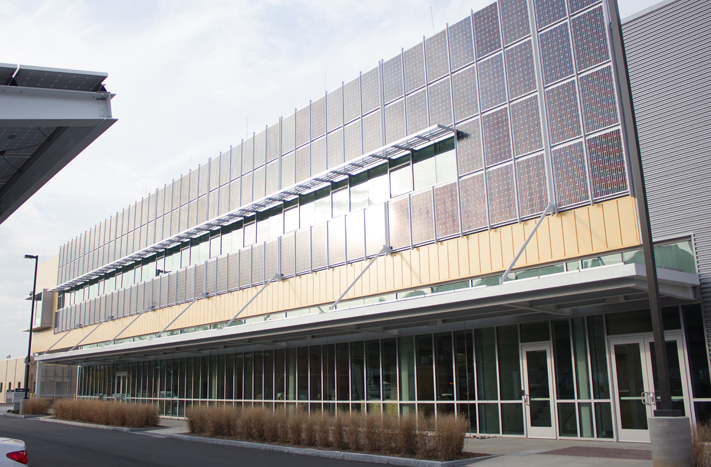
The 42,000 square foot building will consume only 29 million BTUs per year—roughly half the energy of a small-sized office.
This article first appeared in the January 11, 2013, edition of the Technique.
In December 2012, the Carbon Neutral Energy Solutions Laboratory (CNES) was awarded the Platinum level LEED (Leadership in Energy and Environmental Design) Certification, the first to be recognized at this level of LEED certification at Tech. The U.S. Green Building Council (USGBC) is in charge of giving out LEED certifications to buildings that meet various environmentally sustainable criteria.
The CNES building was also the first building on campus with a net-zero energy consumption goal with onsite energy production. Additionally, the 42,000 square foot building will consume only 29 million BTUs per year—roughly half the energy of a small-sized office.
“The building itself is a low consumer of energy. It has no air conditioning; it’s just shade and shelter with natural ventilation and very large fans for controlling the fans for controlling the temperature in there,” Jones said.
In addition, the building features a variety of other “green” technologies, such as the largest and most expensive photovoltaic (PV) array on campus. According to Jones, these PV cells generate 290 kW, equivalent to 91 percent of the building’s total energy use.
“Almost every available surface, we put photovoltaic cells on,” Jones said.
Jones, however, acknowledged LEED certification was not the primary reason for designing a sustainable building.
“Basically, LEED is a useful measuring system—that’s all it is,” said Darrell Scott Jones, Director of Design and Construction in the Facilities Department. “We try to design sustainably in everything we do. We use LEED as a measuring end—it’s not an end of itself, but just a way to know how you’re doing.”
“The principal thing is that we wind up with a building that’s very good to occupy in terms of indoor air quality, natural light and ventilation,” Jones said.
Material reuse, green power and innovative wastewater technologies are some of the creditable criteria awarded after various prerequisites are met, for new building construction projects. Buildings that receive a score of 80 or more out of a 100 points are eligible for platinum LEED certification.
